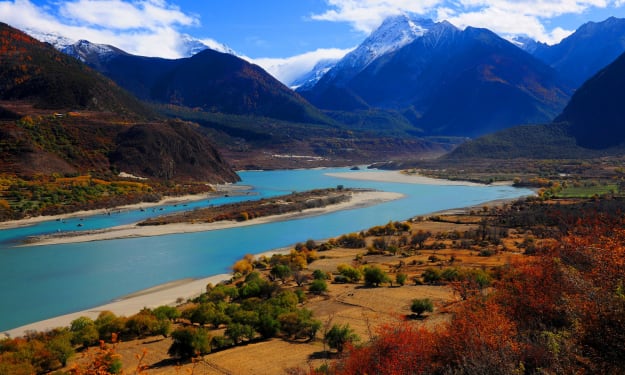The Old Surroe Forest... Weird underwater woods.
Is there a forest under the sea?

When the tigers with sword teeth, sophie mammoths and North American giant zombies encountered during the last ice age some 18,000 to 800,000 years ago, the Gulf coast climate was slightly colder and more similar to areas in the north, such as Mizori and North Carolina's climate today, with sea level falling, more land on the continental shelf, and the swamps in the soro trees have taken hold in what is now known as the Gulf of North Mexico.
An event took place, suddenly killing and burying the saru forests along the Gulf coast, where swamp trees buried by sediment were preserved for thousands of years. About 18,000 years ago, sea level rose as ocean water moved inside. The trees buried in former swamp deposits were preserved. In 2004, Hurricane Ivan cut across the area and revealed an ancient woodland, called the Old Surro Forest.
Where is an underwater forest?
Off the coast of Alabama, an old forest full of marine life is like coral reefs, but how did you get there? By a storm, an ancient tree forest found 60 feet underwater in the Gulf of Mexico south of the Gulf of Shores in Alabama was explored.
The forest appears to be a very unique relic of the past of our planet, the only known site where a coastal forest from the ancient ice age has been preserved in its place and is considered a treasure of information, providing new insights about everything from the climate in the region to annual rainfall, insects and plant species that inhabited the Gulf coast before humans reached the new world.
What's the storm that revealed the woods underwater?
In 2004, Hurricane Ivan hit the Gulf Coast and swept the seabed and sediments that kept the forest buried. Since then, the site now located 60 feet underwater off the coast of Alabama in Mobile Bay or Alabama has been visited by a few scientists and directors.
How the old forest was flooded underwater.
Scientists believe that the forest has been buried under the deposits of the Gulf for centuries until it was discovered by giant waves led by Hurricane Ivan in 2004. Many of the soro trees are submerged under water and have been submerged by the Gulf of Mexico and preserved from degradation under the sediments.
Are there underwater trees?
Marine geologist Christine DeLong said about the old trees that she extracted from about 8 miles from the beach 60 feet deep from water: the smell of fresh saru trees.
It's a familiar smell for Dilling, and her grandfather cut off the sleeve trees in Florida. The bald berries were of high value in the 19th century because they didn't decompose easily and resistant to water rot and insects. Now they're no longer registered and protected on public land. She said: "We were surprised to find this berries intact because the wood in the ocean usually decomposes from shipworms and bacteria.
Sorry tree wood analysis.
In 2013, DeLong and its SCUBA research team explored the site and recovered 23 samples of the pseudo trees and analysed the wood in its lab in LSU, where she was a co-professor at the Department of Geography and Anthropology and at the University of Idaho, who dated radioactive carbon to the wood samples and found that they were too old to date radioactive carbon, so her team used other methods to determine the history of the forest and found that the forest was part of the first part of the last ice age and was between 42000 and 74,000 years old.
The region experienced climate change, but it was getting colder and not a gradual drop in climate. These rapid impulses were a drop in sea level and it was certainly a chaotic time, but land and forests were able to withstand these changes.
In 2015 and 2016, the DeLong team collected 18 cores of sediment, which are long tubes of sand and compressed dirt from all over the site of the Old Surro Forest underwater. They found sand and sea shells in the upper layers of sediment cores but also found a dark organic peat that resembled the soil with its roots and leaves towards the bottom of the nuclei.
She said as a marine geologist that we didn't see this kind of sediment, and what's interesting is to find seeds from St. John's plant, the tree of the button, and a lobster, which are local plants that we can find on land today, but we found them preserved in the ocean.
The swamp water naturally contains a low percentage of oxygen, which is believed to have preserved these samples of degradation, and researchers have some assumptions about what happened to the Sorrow Forest. One idea is that sea level suddenly rose and flood plain buried the Sorrow Forest. Another idea is that the melting of the ice cap caused a sudden flow of water on the Mississippi River and other nearby rivers that pushed the sediment that buried the coastal forest.
Regardless of how that happens, Dilling and her colleagues believe that it happened all over the region and that there may be other ancient trees underwater along the Gulf coast.
An ancient underwater forest in the Gulf of Mexico.
Nearly 60,000 years ago, in prehistoric times, humans began to emerge from Africa, a forest of surroe trees grew on the banks of a river near the Gulf of Mexico as the trees aged fell and were buried under sediment. When the sea level rose, the remains of the forest were again covered.
An underwater forest could bring new drugs.
Now scientists have discovered the same forest and believe it may contain the secrets of inventing new medicines and saving lives. For thousands of years, the old forest has remained undisturbed according to the National Oceanic and Atmospheric Administration (NOAA).
The real excitement of scientists began when they took wood to the lab and took a look at the kind of organisms that benefited from this old exposed wood.
The different species of animals buried there. Of the more than 300 animals removed from wood, scientists focused particularly on only one animal: shipworms, a kind of accelerator that converts wood into animal tissue.
Shipworms are not new to the flag and they are common and can be found in most oceans where there is wood but bacteria found from ships that lived inside the 60,000-year-old wood may lead to new life-saving medicines.
After research by scientists, they discovered that shipworms produced 100 strains of bacteria, many of which were new and 12 of which were subject to DNA sequences to assess their ability to make new medicines.
Previous research on shipworm bacteria has already resulted in at least one antibiotic study as a cure for parasitic infections.
Scientists have tested antimicrobial and neuroactivity, which is the direction of painkillers as well as anti-cancer drugs, as well as life-saving drugs. Scientists will study new samples to see whether they can be applied in the production of paper, textiles, food, animal feed, microchemicals and renewable fuels.






Comments (1)
Hey there, just wanna let you know that this needs to have the disclaimer added to the beginning or ending, stating that it was created with the help of AI 😊